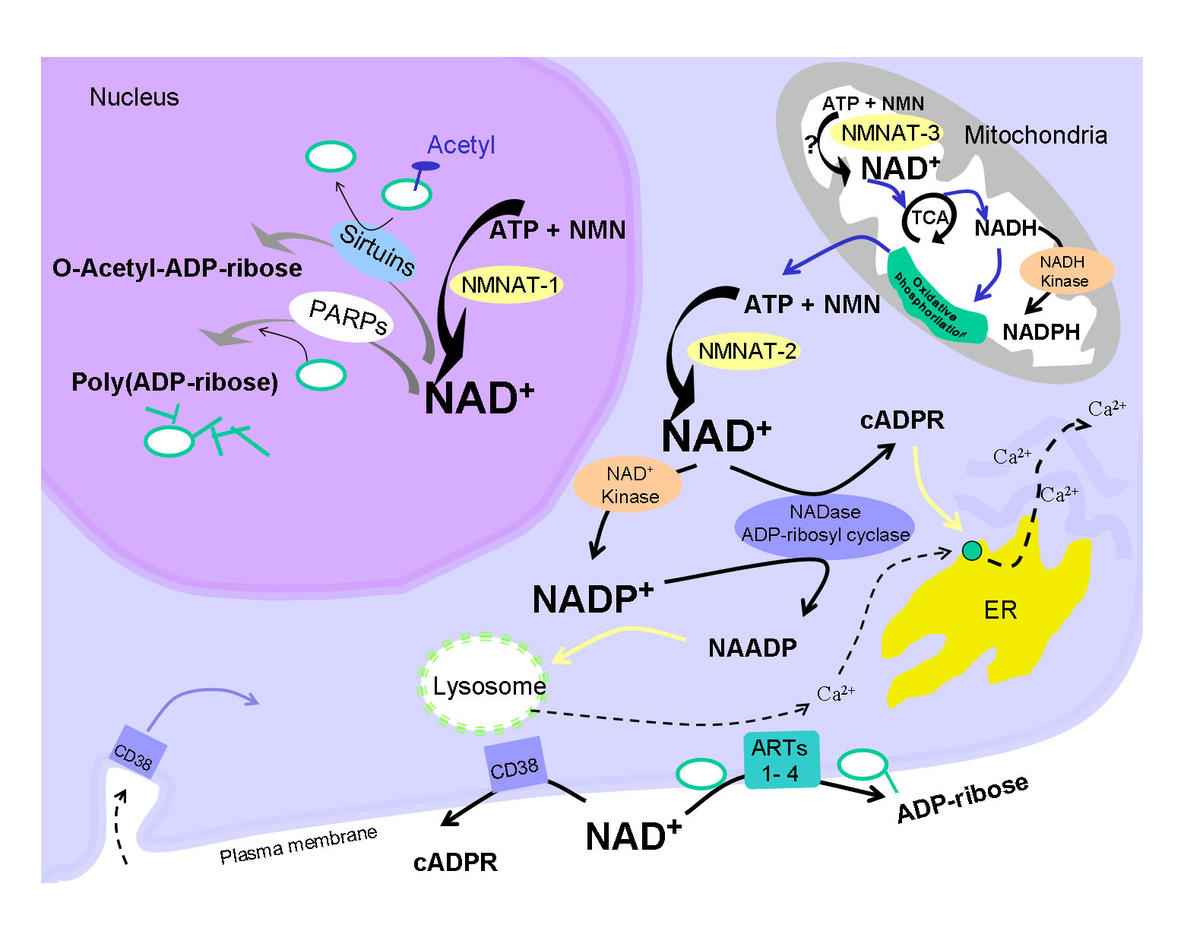Novel roles of a vitamin: Small molecules with key functions in energy and signal transduction
Hovedinnhold
Most biological processes require energy and are tightly regulated. Energy is extracted from food supplies and eventually transformed into ATP, the universal energy carrier of the cell. These pathways consist of many reactions which involve NAD or NADP, small molecules which serve as intermediate energy transmitters. Vitamin B3 is essential for the synthesis of these nucleotides. Interestingly, the key molecules in energy transduction also have important roles in the regulation of all vital cellular activities. While this has long been known for ATP, the multiple signalling functions of NAD and its derivatives have only over the past decade been fully appreciated. Research in many laboratories has now revealed several unexpected biochemical conversions of these nucleotides which might even have an impact on the organism as a whole, for example, life-span regulation.
The biosynthesis of NAD(P) has also moved into focus, because it is now clear that the regulation of the reactions involved will crucially influence the subsequent signalling processes. We have previously identified the human enzymes which catalyse the final steps in NAD and NADP generation and demonstrated their importance for human cells. We have also revealed direct interactions between proteins of the biosynthetic pathway of NAD and a major nuclear signalling enzyme, which is a key component of the DNA repair machinery and thereby controls cell survival following DNA damage. Our current work is aimed at further dissecting the molecular mechanisms of this network connecting cellular energy and signalling transmission. Besides the nutritional aspects of vitamin B3, several studies, including clinical trials, have demonstrated that pharmacological modulation of NAD-related reactions has enormous potential in cancer therapy and in the treatment of diseases involving inflammatory processes. In addition, based on the requirement for cellular energy metabolism, increasing the availability of NAD(P) might also help to enhance the physical condition.
Similar to ATP, NAD(P) is used for covalent protein modifications and the generation of biologically active messenger molecules. The reactions of NAD-mediated protein modification include mono- and poly-ADP-ribosylation as well as NAD-dependent protein deacetylation. Moreover, both NAD and NADP serve as precursors of intracellular calcium mobilising agents including cyclic ADP-ribose (cADPR) and nicotinic acid adenine dinucleotide phosphate (NAADP). The protein modifications regulate specific reactions which influence fundamental cellular events including cell division, gene expression, DNA repair and others. Since calcium serves as a key regulator during development and in situations of cellular stress, the generation of the NAD(P)-derived messengers is also regarded to be of critical importance. The scheme below summarizes some of the cellular pathways of NAD generation and its use in regulatory processes.
Abbreviations: ART, mono-ADP-ribosyltransferase; TCA, citric acid cycle; cADPR, cyclic ADP-ribose; ER, endoplasmic reticulum; NAADP, nicotinic acid adenine dinucleotide phosphate; NADase, bifunctional NAD glycohydrolase/ADP-ribosyl cyclase; NMNAT, nicotinamide mononucleotide adenylyltransferase; PARP, poly-ADP-ribose polymerase.
